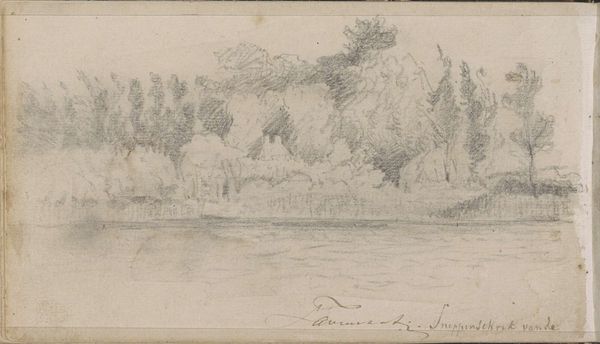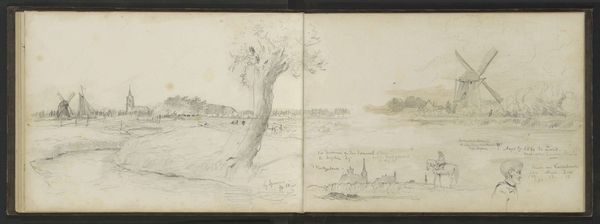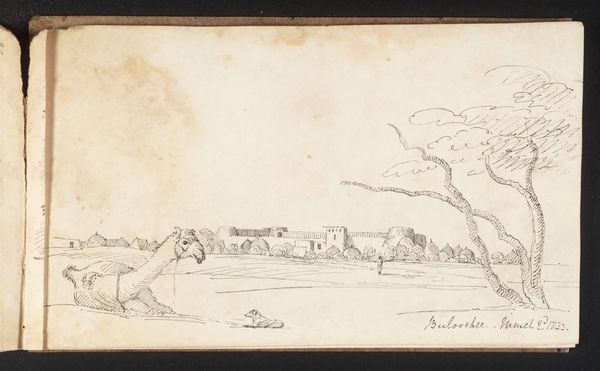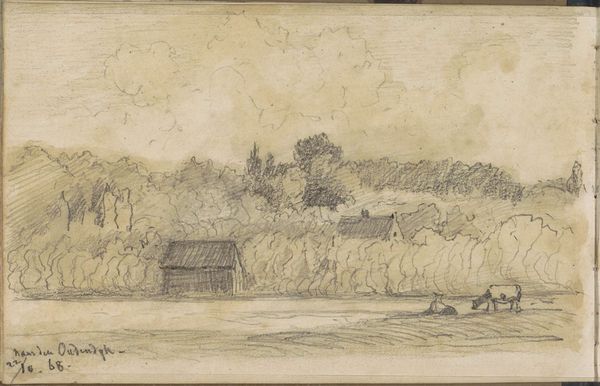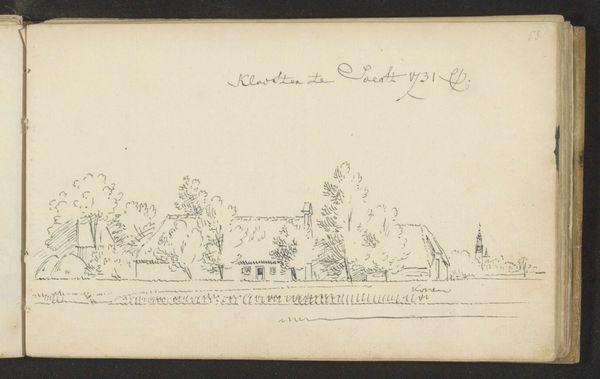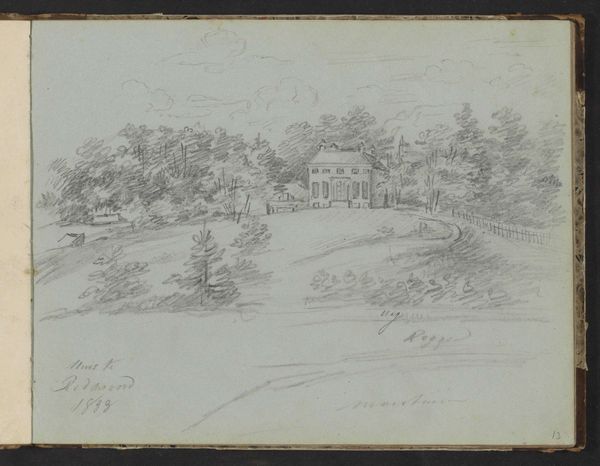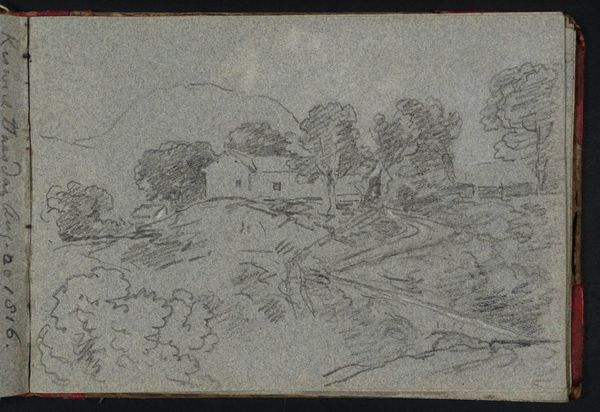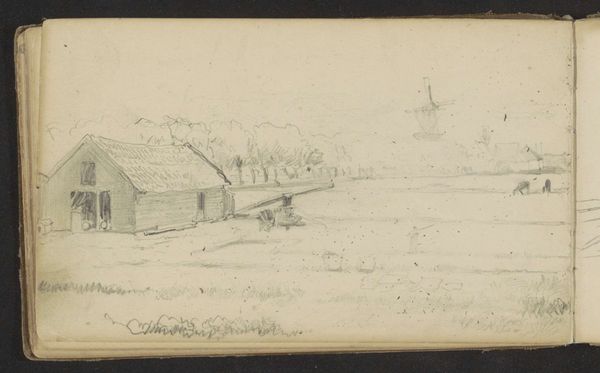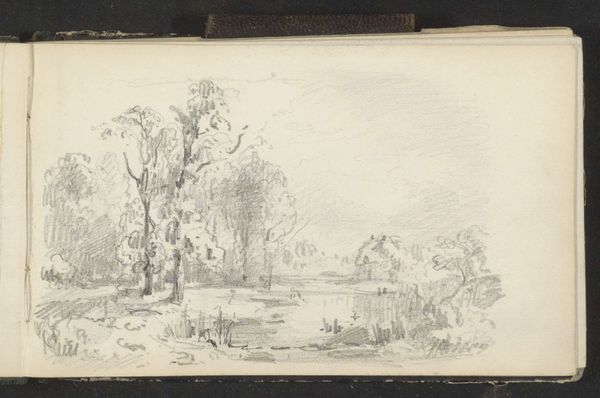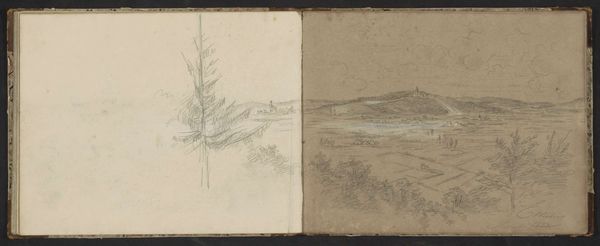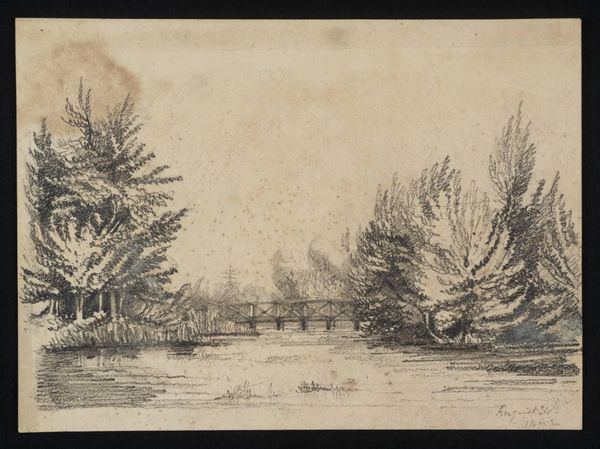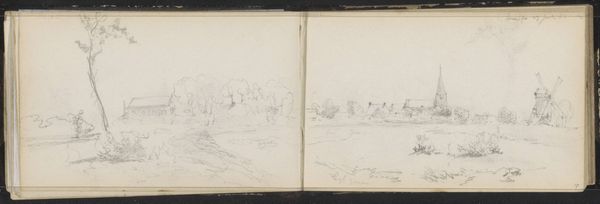
drawing, pencil
#
drawing
#
light pencil work
#
pen sketch
#
sketch book
#
hand drawn type
#
landscape
#
personal sketchbook
#
ink drawing experimentation
#
pen-ink sketch
#
pencil
#
pen work
#
sketchbook drawing
#
sketchbook art
#
realism
Copyright: Rijks Museum: Open Domain
Editor: This is "Trees and Houses by a Pond," a pencil and pen drawing by Johannes Tavenraat from around 1864 to 1868, housed here at the Rijksmuseum. It strikes me as a very intimate sketch, almost like a glimpse into the artist’s private notebook. What do you see in this piece, looking at it from a formal perspective? Curator: Immediately, the bifurcated composition compels me. Two distinct landscapes are presented, each separated yet bound by the spine of what appears to be a sketchbook. Note the contrast in line weight. The left panel exhibits a greater density of marks, particularly in the clustering of trees. Editor: Yes, I notice that too. The trees on the left have a certain weight to them, whereas on the right the depiction of the foliage is so much lighter. Why would the artist have approached the two scenes with different strategies? Curator: The variation might signal a difference in the artist's engagement with the scene at hand. Or perhaps it represents two discrete moments in time, captured with immediacy in situ. Observe the inscriptions below the landscape on both pages of the spread; one even seems to describe a treatment of water, further contextualizing the sketches in terms of pure representation. Does this change your thinking? Editor: It does, a little. It's fascinating how those notes provide more texture, even like they're part of the art. What did you take away from considering the sketchbook aspect and composition in "Trees and Houses by a Pond?" Curator: Primarily that even in what appears to be a casual sketch, we can discern deliberate formal choices which encourage us to decode its underlying visual structure. What initially seemed like a fleeting impression reveals itself to be a carefully constructed composition, designed to capture the very essence of the landscape. Editor: Thanks. Now I am looking closer at not just what, but how the landscape and writing coexist on a simple piece of paper. It enriches the way I will view art from now on.
Comments
No comments
Be the first to comment and join the conversation on the ultimate creative platform.
